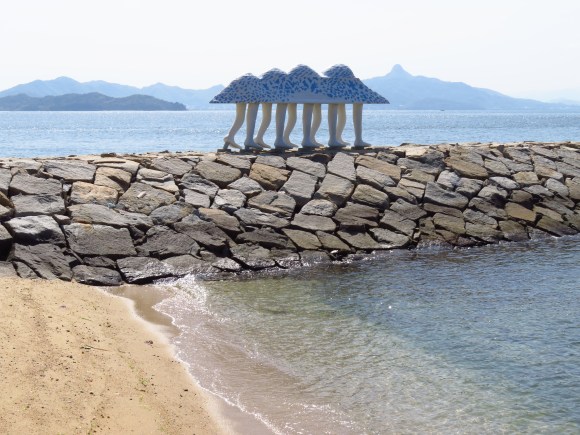
The Setouchi Triennale Art Festival takes place every three years on the art islands of Japan’s Seto Inland Sea–and this year is a festival year! Let’s check it out!
Previously listed in our top 8 Japan events to look forward to in 2016, this year’s festival promises to bring some of the world’s best contemporary art to Japan. Being Japan, the festival is defined by seasons, of course, and while the spring art festival has just ended, the summer and autumn festivals are still to come. In addition, you can still see a lot of art between seasons as there are permanent exhibitions as well as several art museums that are open year-round.
The extravaganza involves over 200 exhibits on a network of a dozen islands in the Seto Inland Sea, also called the Seto Naikai (or Setouchi, from which the name of the festival is taken). If you’ll be spending a few days island-hopping during the festival, you might want to get a three-day ferry pass (2,200 yen or US$20) which can save you a bit of money depending on how many islands you’re planning on going to. You’ll also want to buy a “Setouchi Triennale 2016 Passport” (5,000 yen or US$46) which entitles you to a one-time free entry into most of the exhibits.
▼ Setouchi Triennale 2016 “Passport”
We managed to fit in 25 exhibits although many of them were outdoor exhibits which you don’t really need a passport to see. But the pass is valid for the rest of the year which gives it additional value.
We spent an inspiring three days visiting Teshima, Ogijima and Naoshima. We started our trip from Takamatsu (Kagawa Prefecture) on the Shikoku side of the Inland Sea and ended at Uno (Okayama Prefecture), on the Honshu side.
Note: Many of the indoor exhibits prohibit photo-taking. It can be confusing because sometimes there is only one sign, and you may not see it even if you’re looking for it. I asked before I entered each exhibit and am displaying photos only where I was specifically given permission—there’s lots more to see!
Takamatsu Port 高松港
At Takamatsu Port there is art, just to get you into the mood.
▼ Shinji Ohmaki –“Liminal Air-core-”
▼ Lin Shuen Long–“Beyond the Border…”
Tip: If you’re heading to several different islands, you’ll find yourself back at Takamatsu to change ferries. This also means there will be layovers.
Teshima 豊島 (ferry from Takamatsu 1,330 yen one way)
▼ Pipilotti Rist–“Your First Color”
This exhibit is reminiscent of the very first “Art House Projects” on Naoshima which took old abandoned Japanese houses and used them as venues for art. In this one, Rist bathes the entire house in a purplish pink color and projects an image onto the ceiling from below which you look through broken roof beams to see. Notice how even traditional items such as a basket take on a different feeling when their color is changed.
▼ Ryue Nishizawa and Rei Naito–Teshima Art Museum
This museum, which includes indoor and outdoor elements, was created by an artist and architect team. The museum grounds is set among a background of rice terraces. Unfortunately, the museum is not included in the passport, but with the passport you do get a discount entry fee of 1,000 yen (US$9) which gets you into the outdoor exhibit, the cafe and the gift shop also.
▼ Christian Boltanski–“Les Archives Du Coeur”
Boltanski’s exhibit is divided into two separate experiences, both involving the listening to heart beats. In the first room you can experience the resounding pulsing of a heart beat syncopated with a pulsating light. In the second room, you can sit while looking out at the Inland Sea while listening to heart beats through ear phones. You can also record and register your own heart beat–for 500 yen (US$4.50) extra–for people to listen to.
Tip: Teshima is a big island, so don’t waste time galumphing around trying to find the sites; take the bus instead. The buses go clockwise and counter-clockwise around the island, and you can hop on and off wherever you want. It’s 200 yen (US$1.80) each time you ride the bus, no matter the distance.
Ogijima 男木島 (ferry 510 yen one way)
Next we went to Ogijima, our favorite island because it has lots of exhibits and you can walk to them all. We stayed overnight here too, which allowed us to get night photos as well as early morning shots.
▼ Jaume Plensa–“Ogijima’s Soul”
We were the first people in the morning to see some of the more popular exhibits.
▼ Keisuke Yamaguchi–“Walking Ark”
▼ Takeshi Kawashima–“Kaleidoscope Black and White”
Imagine walking into a house completely covered with these black and white designs! That’s what you’ll find in Kawashima’s exhibit. Even the floor and Japanese doors were covered in it.
▼ Mayumi Kuri–“Memory Bottle”
▼ Haruki Takahashi–“Sea Vine”
You really have to see this to appreciate it. The artist has made an entire network of vines out of porcelain and then hung the entire fragile contraption from the ceiling so it appears to float. If you look closely, you can see the thousands of little strings hanging from the ceiling that are attached to the vines.
▼ Oh, and did we mention that Ogijima is a cat island?
▼ You’ll find the adorable, but shy, island felines hiding here and there.
Tip: There are two places to stay on Ogijima. Madoka Minshuku overlooks Ogijima Port. Sakura Minshuku is on the other side of the island, a bit of a walk if you have luggage, but close to “Walking Ark.”
Naoshima 直島 (from Uno 290 yen, from Takamatsu 520 yen)
▼ Yayoi Kusama–“Red Pumpkin”
This pumpkin, by one of Japan’s most famous contemporary artists, Yayoi Kusama, is the first thing you’ll notice when coming into Miyanoura Port on the ferry. It usually commandeered by happy children who like to run around and play in it.
▼ Sou Fujimoto–Naoshima Pavillion
▼ Yayoi Kusama–“Pumpkin” (located on a different part of the island).
This intriguing work is one of the most famous outdoor exhibits on Naoshima. Luckily, it is located in a less accessible area of the island (near Benesse House and the Benesse Hotel), so it is not always inundated with tourists. However, it’s still a good idea to get there early in the morning if you want the pumpkin all to yourself or you don’t want to get photobombed by other posing tourists. Indeed, I’ve never seen so many people hug or kiss a pumpkin before! If you must kiss it, you might want to bring some anti-bacterial wipes…
▼ Yuki Iiyama–“100 Living Tales”
“Apparently, on Ishishima dogs come along on the fishing boats. It seems that they follow their owners.”
This collection takes place inside Miyanoura Gallery 6, a converted pachinko parlor. When you walk inside, the lighting and haunting quietness of the place makes you feel like the building is leading a long-awaited, quiet retirement. Together with the building you can reflect on the way things used to be on the islands by reading the collection of short stories pinned up on pieces of paper. These missives, anywhere from one sentence (“A tanuki stole my shoes.”) to one paragraph long, are terse, pithy reflections on life on the islands. Unfortunately, this exhibit ended April 17. But don’t despair: the next exhibit in the same building for the summer is “Paying a Courtesy Call on the Incumbent Mayor by all His Predecessors in History.” For this, the artist (Yoshinori Niwa), invited itako shamans to Naoshima to talk to the dead. Hmmm! July 18-Sept. 4, 2016.
Tip: When going to Naoshima, you’ll most likely leave from Uno Port (Okayama). The last ferry from Miyanoura Port back to Uno is 7:15pm, which means you can get some sunset pictures before returning to the mainland. At night, the lights really change the atmosphere inside the Red Pumpkin.
Uno Port 宇野港
▼ Atsushi Ozawa–“Beyond the Last Stop”
These bicycles aren’t just exhibits–you can also rent them. Just try to resist doing a wheelie while perched upon this ridable art!
▼ Esther Stocker–“JR Uno Minato Line Art Project”
Even the train station has been done up to be artsy. Look for more of these along the JR Mito Line as they add more stations throughout the summer as a preamble to get travelers into the art groove before arriving in Uno. “The station is on your left. You can’t miss it.”
Tip: There is a new guesthouse catering to English speakers called Uno Port INN, which is next to the train station and across from Uno Port.
The Setouchi International Art Festival is always expanding and now even includes the performing arts. We’re really looking forward to that!
The festival is carried out over 108 days and three seasons for 2016: spring (March 20–April 17), summer (July 18–September 4) and autumn (October 8–November 6).
Copyright©RocketNews24
Photos: HumorUs Guide to Japan

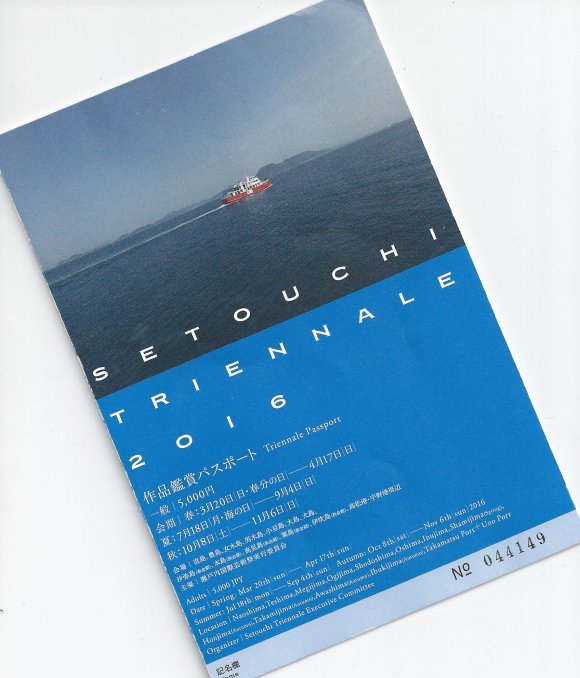

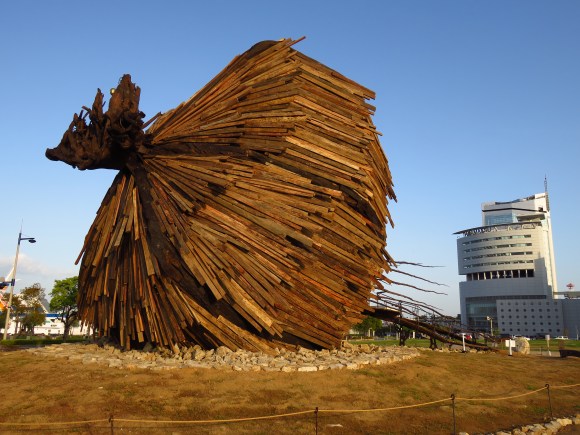
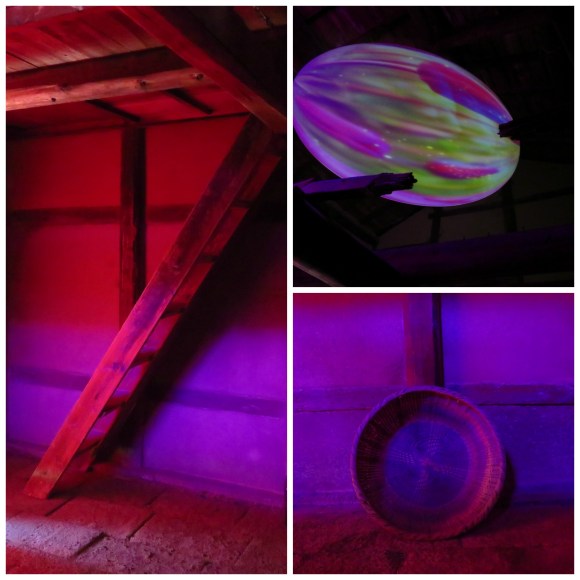
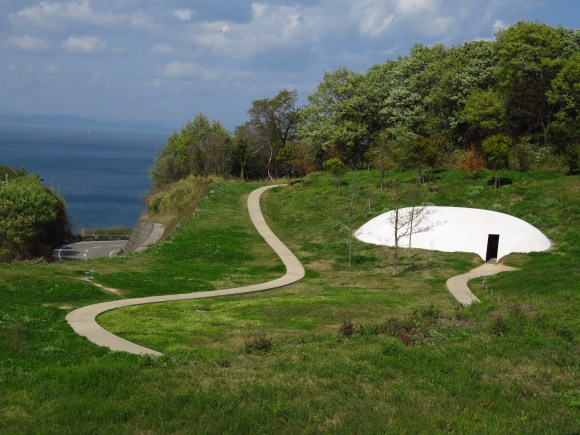
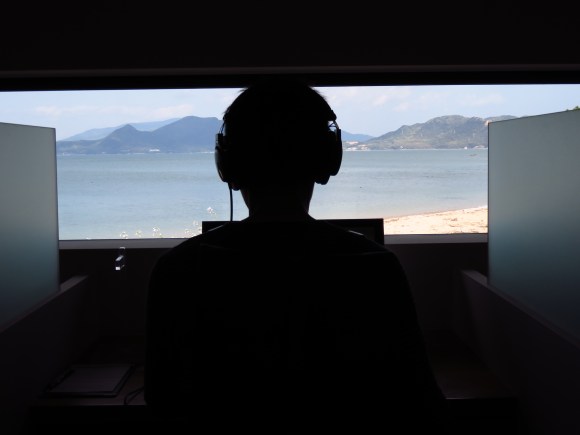
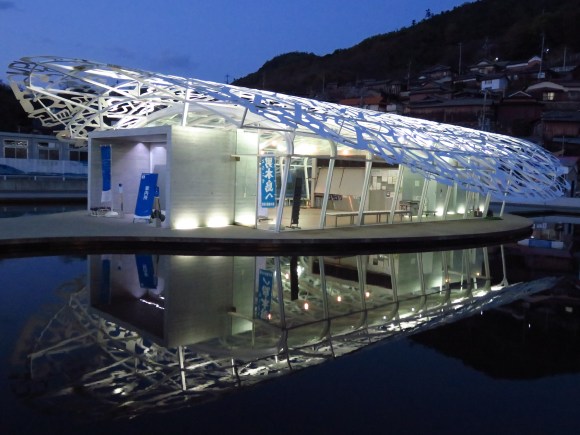
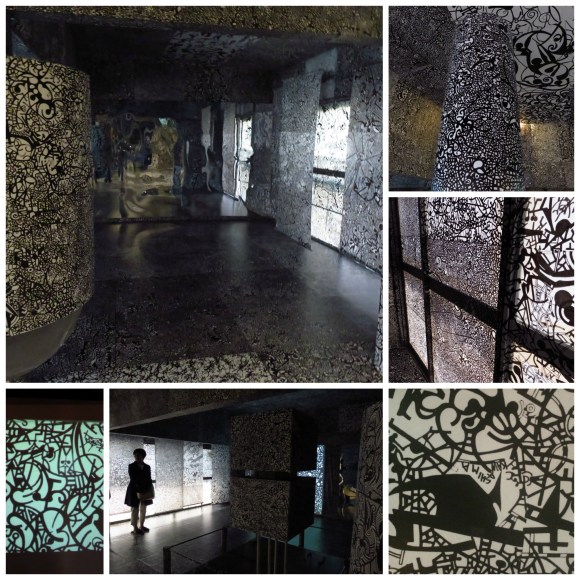
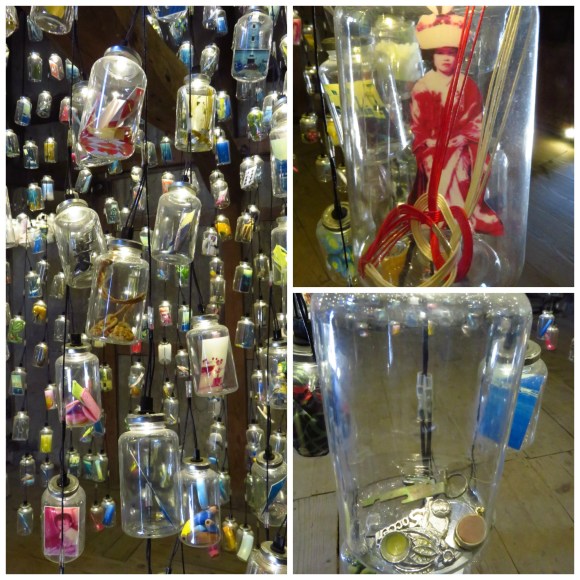
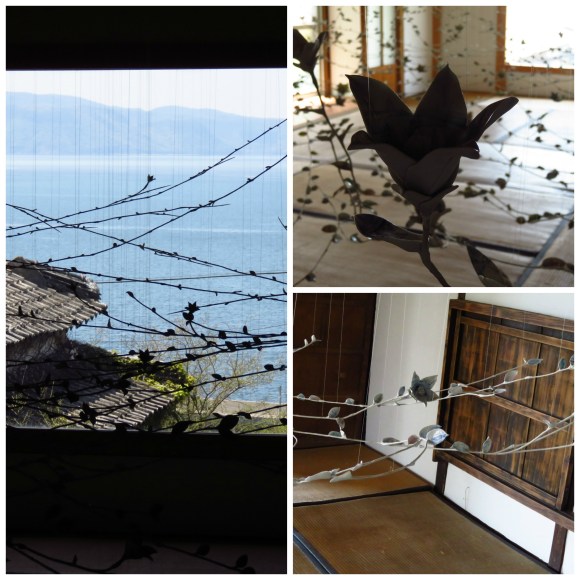
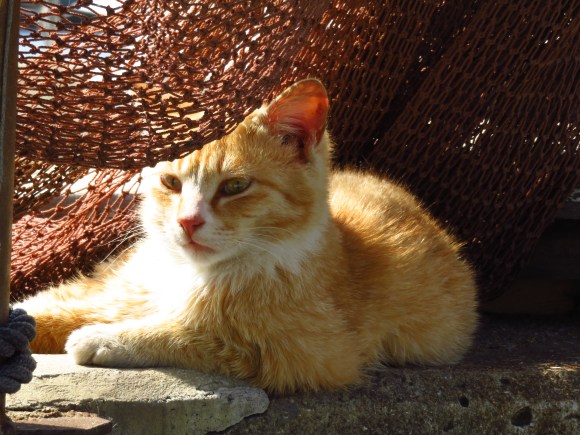
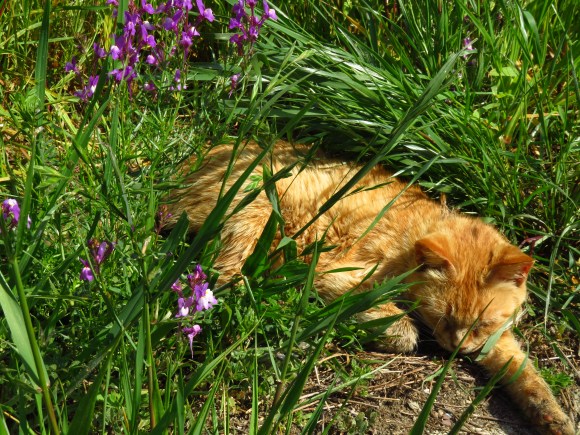
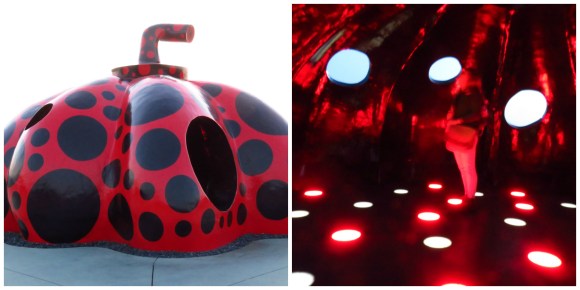
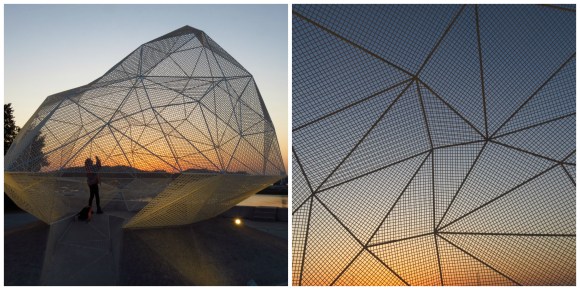
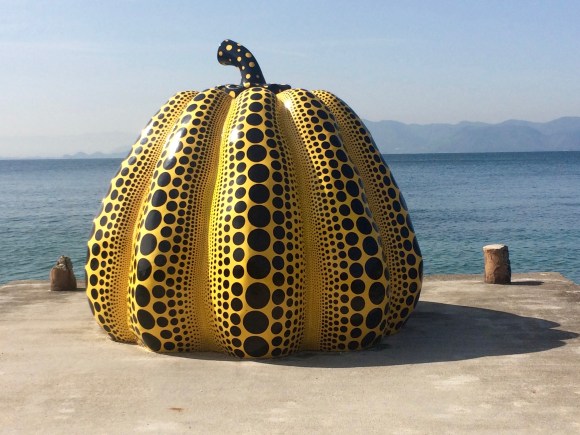
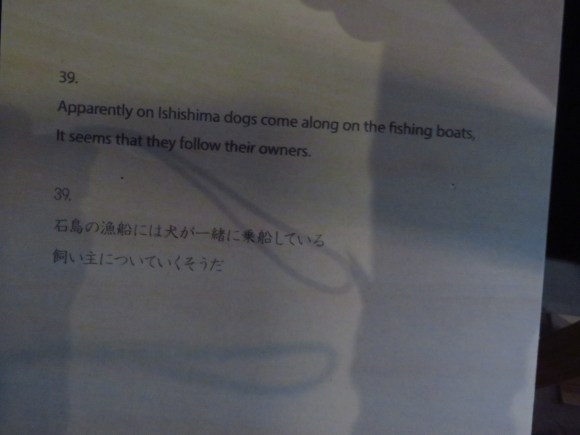
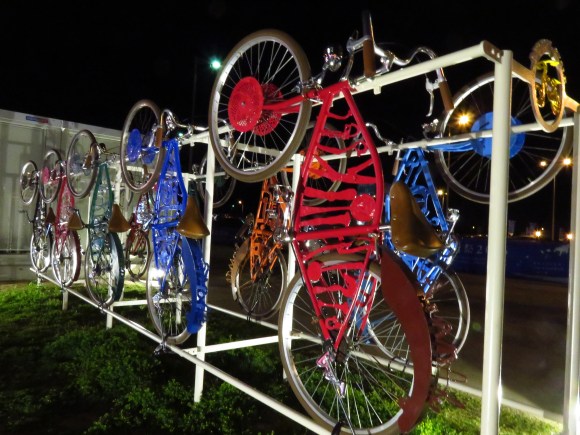
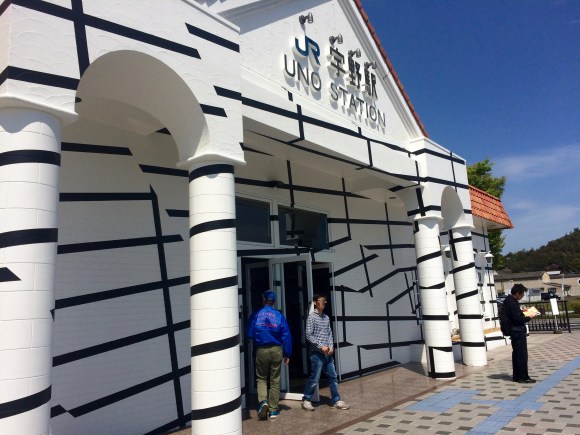
 8 Japan-related events to look forward to in 2016!
8 Japan-related events to look forward to in 2016! The new Simose Art Museum in Hiroshima houses a floating, futuristic surprise next to the sea
The new Simose Art Museum in Hiroshima houses a floating, futuristic surprise next to the sea Yayoi Kusama’s Yellow Pumpkin washed away during typhoon in Japan
Yayoi Kusama’s Yellow Pumpkin washed away during typhoon in Japan Osaka to Fukuoka for less than 40 bucks? It’s possible with Japan’s overnight ferry
Osaka to Fukuoka for less than 40 bucks? It’s possible with Japan’s overnight ferry Yokai Modeling Awards return to Kagawa after 5-year hiatus
Yokai Modeling Awards return to Kagawa after 5-year hiatus Foreigner’s request for help in Tokyo makes us sad for the state of society
Foreigner’s request for help in Tokyo makes us sad for the state of society Seaside scenery, history, and so many desserts on Yokohama’s Akai Kutsu【Japan Loop Buses】
Seaside scenery, history, and so many desserts on Yokohama’s Akai Kutsu【Japan Loop Buses】 Japan’s summertime towelket pillowcases are even better with the addition of Ghibli stars【Photos】
Japan’s summertime towelket pillowcases are even better with the addition of Ghibli stars【Photos】 Mikado Coffee is a 76-year-old coffee chain with a major celebrity connection
Mikado Coffee is a 76-year-old coffee chain with a major celebrity connection Akihabara pop-up shop sells goods made by Japanese prison inmates
Akihabara pop-up shop sells goods made by Japanese prison inmates Ghibli Park now selling “Grilled Frogs” from food cart in Valley of Witches
Ghibli Park now selling “Grilled Frogs” from food cart in Valley of Witches Japanese city loses residents’ personal data, which was on paper being transported on a windy day
Japanese city loses residents’ personal data, which was on paper being transported on a windy day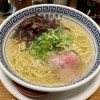 Best breakfast ramen in southern Japan? Taste-testing Fukuoka’s super-convenient Morning Ramen
Best breakfast ramen in southern Japan? Taste-testing Fukuoka’s super-convenient Morning Ramen Sakura tree falls on man at Sannenzaka near Kiyomizu temple in Kyoto 【Breaking News】
Sakura tree falls on man at Sannenzaka near Kiyomizu temple in Kyoto 【Breaking News】 Should you add tartar sauce to Japanese curry rice? CoCo Ichi makes diners an unusual offer
Should you add tartar sauce to Japanese curry rice? CoCo Ichi makes diners an unusual offer McDonald’s new Happy Meals offer up cute and practical Sanrio lifestyle goods
McDonald’s new Happy Meals offer up cute and practical Sanrio lifestyle goods Japanese ramen restaurants under pressure from new yen banknotes
Japanese ramen restaurants under pressure from new yen banknotes French Fries Bread in Tokyo’s Shibuya becomes a hit on social media
French Fries Bread in Tokyo’s Shibuya becomes a hit on social media Red light district sushi restaurant in Tokyo shows us just how wrong we were about it
Red light district sushi restaurant in Tokyo shows us just how wrong we were about it New private rooms on Tokaido Shinkansen change the way we travel from Tokyo to Kyoto
New private rooms on Tokaido Shinkansen change the way we travel from Tokyo to Kyoto Tokyo Tsukiji fish market site to be redeveloped with 50,000-seat stadium, hotel, shopping center
Tokyo Tsukiji fish market site to be redeveloped with 50,000-seat stadium, hotel, shopping center Beautiful Ghibli sealing wax kits let you create accessories and elegant letter decorations【Pics】
Beautiful Ghibli sealing wax kits let you create accessories and elegant letter decorations【Pics】 Secret Kitchen bento serves Japanese flowers, birds, wind and moon in a box, but is it worth it?
Secret Kitchen bento serves Japanese flowers, birds, wind and moon in a box, but is it worth it? New definition of “Japanese whiskey” goes into effect to prevent fakes from fooling overseas buyers
New definition of “Japanese whiskey” goes into effect to prevent fakes from fooling overseas buyers Our Japanese reporter visits Costco in the U.S., finds super American and very Japanese things
Our Japanese reporter visits Costco in the U.S., finds super American and very Japanese things Studio Ghibli releases Kiki’s Delivery Service chocolate cake pouches in Japan
Studio Ghibli releases Kiki’s Delivery Service chocolate cake pouches in Japan All-you-can-drink Starbucks and amazing views part of Tokyo’s new 170 meter-high sky lounge
All-you-can-drink Starbucks and amazing views part of Tokyo’s new 170 meter-high sky lounge More foreign tourists than ever before in history visited Japan last month
More foreign tourists than ever before in history visited Japan last month New Pokémon cakes let you eat your way through Pikachu and all the Eevee evolutions
New Pokémon cakes let you eat your way through Pikachu and all the Eevee evolutions Disney princesses get official manga makeovers for Manga Princess Cafe opening in Tokyo
Disney princesses get official manga makeovers for Manga Princess Cafe opening in Tokyo Sales of Japan’s most convenient train ticket/shopping payment cards suspended indefinitely
Sales of Japan’s most convenient train ticket/shopping payment cards suspended indefinitely Sold-out Studio Ghibli desktop humidifiers are back so Totoro can help you through the dry season
Sold-out Studio Ghibli desktop humidifiers are back so Totoro can help you through the dry season Japanese government to make first change to romanization spelling rules since the 1950s
Japanese government to make first change to romanization spelling rules since the 1950s Ghibli founders Toshio Suzuki and Hayao Miyazaki contribute to Japanese whisky Totoro label design
Ghibli founders Toshio Suzuki and Hayao Miyazaki contribute to Japanese whisky Totoro label design Doraemon found buried at sea as scene from 1993 anime becomes real life【Photos】
Doraemon found buried at sea as scene from 1993 anime becomes real life【Photos】 Tokyo’s most famous Starbucks is closed
Tokyo’s most famous Starbucks is closed One Piece characters’ nationalities revealed, but fans have mixed opinions
One Piece characters’ nationalities revealed, but fans have mixed opinions We asked a Uniqlo employee what four things we should buy and their suggestions didn’t disappoint
We asked a Uniqlo employee what four things we should buy and their suggestions didn’t disappoint Japanese prefecture that named a Pokémon as its governor to install 16 new Pokémon manholes
Japanese prefecture that named a Pokémon as its governor to install 16 new Pokémon manholes Ben & Jerry’s releases Japan-exclusive Lemont. Fuji, made with Japanese-sourced ingredients
Ben & Jerry’s releases Japan-exclusive Lemont. Fuji, made with Japanese-sourced ingredients New digital art exhibition in Nagoya promises “a paradise of bugs” in a colorful forest
New digital art exhibition in Nagoya promises “a paradise of bugs” in a colorful forest Adorn yourself with Pixar magic with stunning Toy Story themed jewelry from Japan
Adorn yourself with Pixar magic with stunning Toy Story themed jewelry from Japan Roppongi Hills celebrates the return of artist Takashi Murakami with cute pop-up cafe
Roppongi Hills celebrates the return of artist Takashi Murakami with cute pop-up cafe Tickets on sale for exhibit of every book Ghibli producer has ever read, boyhood room recreation
Tickets on sale for exhibit of every book Ghibli producer has ever read, boyhood room recreation Spirited Away’s No-Face, Yubaba appear in seaside park in Japan as Ghibli museum exhibit opens 【Vid】
Spirited Away’s No-Face, Yubaba appear in seaside park in Japan as Ghibli museum exhibit opens 【Vid】 Uno Mario Kart is ready to take the action from the track to the cards with cool crossover rule
Uno Mario Kart is ready to take the action from the track to the cards with cool crossover rule New Hiroshima guest house is expressly designed to feel like staying in a submarine
New Hiroshima guest house is expressly designed to feel like staying in a submarine Japanese-style Rilakkuma teahouse opens in one of the most beautiful places in Japan
Japanese-style Rilakkuma teahouse opens in one of the most beautiful places in Japan Surreal samurai art exhibition mixes the historical with the bizarre
Surreal samurai art exhibition mixes the historical with the bizarre McDonald’s Japan set to roll out honey lemon shakes
McDonald’s Japan set to roll out honey lemon shakes Tokyo museum’s current exhibition offers a dose of retro style and romance from 100 years ago
Tokyo museum’s current exhibition offers a dose of retro style and romance from 100 years ago Even Spirited Away’s Yubaba wants you to wear a mask for coronavirus safety
Even Spirited Away’s Yubaba wants you to wear a mask for coronavirus safety Japanese hotel’s amazingly beautiful lobby is interactive art that changes with the seasons【Pics】
Japanese hotel’s amazingly beautiful lobby is interactive art that changes with the seasons【Pics】 Everything you need to know about takoyaki (octopus balls) 【Video】
Everything you need to know about takoyaki (octopus balls) 【Video】
Leave a Reply